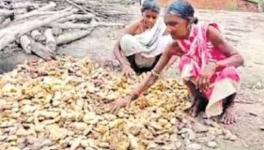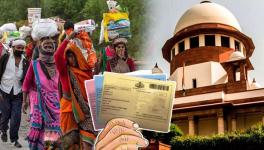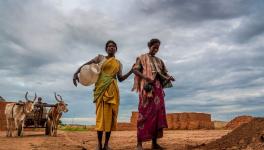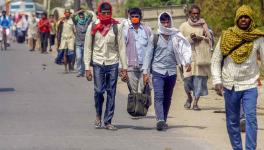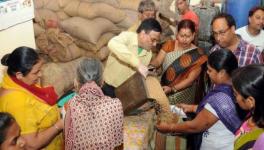Staple Food Rice Becomes Privilege in Naya Kashmir
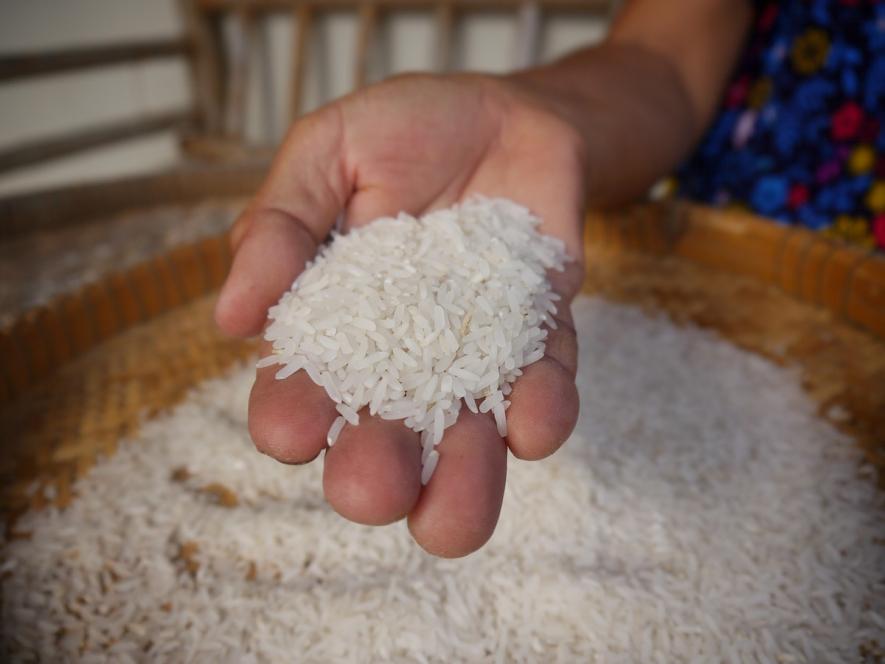
Representational Image. Image Courtesy: Rawpixel
At a south Kashmir ration ghat around 60 km from Srinagar, disappointment and desperation were palpable as people queued up to collect their monthly rice allotment.
“This doesn’t even last for half a month,” a man in his early 40s said. The one behind him interjected angrily, “The government only makes false promises. It wants us to die of hunger now.”
The inadequate food grain supply has triggered impatience, frustration and anger among poor Kashmiris. Under the National Food Security Act (NFSA), every individual is entitled to a monthly 5 kg of food grains. However, the allocation is insufficient for Kashmir, where rice is a staple food of the majority and is eaten twice a day. Until last year, every Kashmiri was entitled to 15 kg of food grains monthly.
Under the Jammu and Kashmir Food Entitlement Scheme (JKFES), started in 2016 as Mufti Mohammad Sayeed Food Entitlement Scheme, an individual would get 5 kg every month plus another 5 kg under the Pradhan Mantri Garib Kalyan Anna Yojana (PMGKAY), launched in the wake of the pandemic in March 2020. Both schemes were cancelled in August and December 2022, respectively.
Although the BPL, PHH and AAY consumers in Kashmir received free food grains, consumers alleged that the freebies were a “deception”.
“The quantity of rice has been shrinking since food grain allocation was reduced to 5 kg. Surviving on such a meagre supply is nearly impossible,” Ghulam Nabi Bhat, from Ganderbal, said.
In April, Kashmiri women took to the streets singing the traditional Wanwun against the curtailment of ration.
"Batih daedi marekh aes musalman.hai khudaya kus toofan"
(Now Kashmiris are being deprived of food grains- oh God, what is this injustice!)
Outraged on inflation, reduced ration quota, smart meters, a group of Kashmiri women protested in Sopore reciting 'Wanwun'. pic.twitter.com/YORGrGNUJF
— Qazi Shibli (قاضی شبلی) (@QaziShibli) April 11, 2023
“We are not beggars. Instead of providing free food grains, provide us with an ample rice supply,” a Kashmiri said.
Mirroring the collective plight, Fareeda (65) is anxious as the rice barrel is about to be empty mid-month. “I have never been so careful about food consumption. I get 25 kg of food grains monthly but feed five mouths. This isn’t sufficient let alone hosting a guest,” she said. “We cannot eat rotis like people of other states.”
Storekeepers at various ration ghats across the region said consumers often request additional rations. “Sometimes they plead or fight with us but we are helpless. The process has been digitised and every family gets only the allotted amount,” a storekeeper requesting anonymity said.
Consumers cannot afford to buy rice from private shops. “We are a family of five and I earn only Rs 7,000; it hardly covers other expenses. I cannot afford to buy rice from private vendors,” Mushtaq Ahmad, a resident of Kulgam employed at a school, said.
Many private traders have stockpiled rice and sell a 30-kg bag for Rs 1,000. “The demand for rice has increased over the past few months,” said Waseem Ahmad, a private rice dealer. “We procure rice for Rs 900-Rs 950. The profit margin is very less,” he said. “Customers tell me that they cannot afford it.”
The reduced rice quota has exacerbated problems with the lack of jobs in the last few years. J&K had the third-highest unemployment rate at 23.1% in March this year, according to the Centre for Monitoring Indian Economy.
“The demand for food grains has increased for the first time in the Valley as a growing number of people are finding it difficult to make ends meet. We need to take extra measures to ensure adequate food supply to families,” Saadat Nasir, head of Kashmir-based NGO Team Red, said. “Kashmir survived the pandemic-induced shutdowns and curfews, but this seems worse.”
Reports show a major decrease in the rice quota allocated to J&K in the last three years. According to the Department of Food, Civil Supplies and Consumer Affairs (FCSCA) data, 5,85,671 quintals of food grains (rice and wheat) was allocated to the Kashmir division under NFSA, JKFES and PMGKAY in July 2020. The allocation was cut to 5,10,000 quintals in August 2021. This was followed by the closure of JKFES, which reduced the quota to 4,55,000 quintals. The subsequent withdrawal of PMGKAY left Valley inhabitants with only 2,83,051 quintals in January 2023.
“The discontinuation of these schemes has greatly affected the amount of food grains allotted to Kashmir. Although the quota is in scale with other states, the government should have made an exemption for the Valley since rice is the staple food of Kashmiris,” an FCSCA official requesting anonymity said.
SHRINKING PADDY FIELDS
Newsclick reported last year on the various reasons responsible for shrinking land under rice cultivation.
According to J&K Department of Agriculture records, the area under paddy cultivation decreased from 1,62,309 hectares in 2012-13 to 1,34,067 hectares in 2021-22. In the last two decades, Kulgam, once known as the Valley’s rice bowl, has lost 50% of its paddy fields to non-agriculture use. Kashmir now depends more on other states for its staple food.
Despite the government’s substantial financial investment to improve paddy cultivation by introducing various schemes for land upliftment, fertilisation and irrigation, paddy productivity has decreased over the years.
As per agriculture department data, paddy productivity has continuously declined in the last few years. From 2352.93 kg per hectare in 2018-19, it decreased to 2095.32 in 2019-20 and dropped to 2079.90 in 2020-21. In 2021-22, it plummeted to an all-time low of 1861.97 kg per hectare.
Farooq Ahmad (50), from Bandipora, converted his paddy field spread over a few acres into an apple orchard to earn better profit. But he regrets the decision. “I incurred recurrent losses due to various reasons. I regret my decision now,” he rued. “I can’t feed my family apples for rice.”
The writers are J&K-based freelance journalists.
Get the latest reports & analysis with people's perspective on Protests, movements & deep analytical videos, discussions of the current affairs in your Telegram app. Subscribe to NewsClick's Telegram channel & get Real-Time updates on stories, as they get published on our website.









